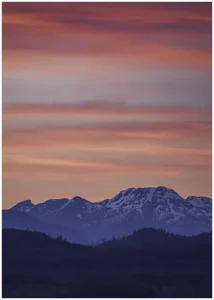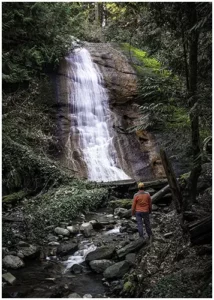
Harness the Power of Light and Shadow in Landscape Photography
In photography, light and shadow are essential for creating captivating photos. It’s important to grasp


Fireworks photography can be a challenge, but it is worth the effort to capture the colourful explosions in the sky. Whether you’re a professional photographer or just starting, these essential fireworks photography tips will help you capture stunning firework photos.
Before heading out to capture fireworks, it’s important to have the right gear. Below are the essential equipment you’ll need:
| Item | Description |
|---|---|
| Tripod | A sturdy tripod is necessary to keep your camera steady during long exposure shots. Look for one that can support the weight of your camera. |
| Lens | A zoom lens is ideal for capturing various angles of the fireworks display. A lens with a focal length of 24-70mm or 70-200mm is a good choice. |
| Mirrorless camera | Mirrorless cameras are lightweight and have fast autofocus capabilities, making them a popular choice for fireworks photography. |
Make sure to charge your camera batteries and bring extra memory cards as well.
When it comes to fireworks photography, having a strong command over exposure is crucial. Here are my tips on adjusting your shutter speed, ISO, and aperture.
I always use manual mode which gives me more control over the exposure settings. Experimenting with different combinations of shutter speed, ISO, and aperture can help you achieve the desired effect.
Properly setting up your camera is essential for capturing great fireworks shots. Before the fireworks begins, set the camera on a tripod to keep it steady and reduce camera shake. Camera shake will result in blurry photos, so keeping the camera stable and still is crucial.
Adjusting your camera settings is also important. Set your camera to manual mode to have full control over the settings. Here are some key camera settings to consider:
| Camera Setting | Recommended Value |
|---|---|
| ISO | 100-200 |
| Aperture | f/8-f/16 |
| Shutter Speed | 2-4 seconds |
These camera settings are a good starting point, but feel free to adjust them based on your preference and the lighting conditions.
Before the fireworks start, focus your camera on the sky where the fireworks are expected to burst. Once the fireworks begin, keep your camera settings the same and take continuous shots.
Creating visually appealing fireworks photos goes beyond just capturing the bursts of light in the sky. The composition of your shot can make a huge difference in the final product. Here are some tips for finding the perfect composition:
By combining the tips above, you can create stunning fireworks photos. Try out different compositions, play around with focal lengths, and experiment with timing your shots. Remember sound travels faster than light. Listen for the explosion and click that shutter button.
Long exposure is a popular technique in fireworks photography that can capture the beautiful light trails and bursts. To achieve long exposure shots, you need to keep the shutter open for a longer period, typically a few seconds or more.
First, set your camera to manual mode and adjust the shutter speed to bulb mode. This will allow you to control the length of the exposure by holding the shutter button down for as long as you want. Keep in mind that the longer the shutter is open, the more light will enter the camera and the brighter photo.
Set the shutter speed to bulb, use a remote shutter release or the self-timer function to keep the camera steady during the exposure. This will help minimize camera shake and prevent any blur in your image.
It’s important to note that when taking long exposure shots, your camera’s sensor will continue to capture light and collect noise. To combat this, use a low ISO and a narrow aperture, which will reduce the amount of light hitting the sensor and minimize noise.
Pro Tip: Use a black card to cover the lens during the fireworks display so that you can control when to start and end the exposure. Remove the card to capture the firework burst and then cover the lens again to move on to the next shot.
Long exposure shots can capture the trails and bursts of fireworks, creating a more dramatic and artistic effect. On the other hand, short exposure shots can freeze the fireworks in mid-air, creating a sharper and more traditional image.
| Long Exposure | Short Exposure |
|---|---|
| Creates light trails and bursts | Freezes fireworks in mid-air |
| Requires longer shutter speed | Uses faster shutter speed |
| Creates an artistic effect | Creates a traditional image |
Experiment with both techniques to find the style that suits you best. Keep in mind that taking long exposure shots requires patience and practice, but the results can be stunning.
Capturing beautiful fireworks photos requires a steady camera and a sharp focus. Camera shake can ruin your shots. Here are some tips to minimize camera shake:
Follow these tips, to minimize camera shake and capture stunning fireworks photos that are sharp, and clear,
To capture the perfect shot, it’s important to understand how a firework display works. Each firework is designed to have a specific shape and colour, so pay attention to the pattern and timing of the show. This will allow you to anticipate the timing and position of the next burst.
One firework burst can look amazing on its own, but capturing multiple bursts in one shot can create an even more impressive image. Try using a slow shutter speed to capture multiple bursts in a single frame. This will require a bit of practice to get the timing right, so don’t get discouraged if your first few shots don’t turn out as expected!
When photographing a firework burst, it’s important to capture the entire explosion. This means adjusting your framing to ensure that the entire burst is in the frame. Consider using a wide-angle lens to capture more of the sky, while still including the burst in the foreground.
To capture the perfect shot, set your camera to manual mode and adjust the shutter speed to between 2 and 10 seconds. This will allow you to capture the light trails of each burst. Use a tripod to keep your camera steady and minimize camera shake. And don’t forget to experiment with different angles and settings to add more variety to your shots!
After capturing firework photos, editing is essential for making them more vibrant and colourful. There are several ways to enhance your images, including adjusting the exposure, colour saturation, and contrast.
To make your photos stand out, try playing with the hues and tones of the image. Boosting the saturation of certain colours, like red or blue, can make the bursts more vivid and eye-catching. Adjusting the contrast and brightness can also help bring out the details of the fireworks and create a more dynamic image.
Pro Tip: Use the dodge and burn tool in editing software to highlight the brightest and darkest areas of the photo. This technique can help to further emphasize the details of the fireworks and create a more dramatic effect
Consider cropping your images to remove any distracting elements and create a more focused composition. Also, don’t forget to properly resize your images for different platforms, whether it’s for social media or print.
An alternative way to capture colourful fireworks is to use different types of filters on your lens. Filters can help to enhance or diminish certain colours, providing a unique perspective on the display. Some filters reduce the light entering the lens, while others shift the colour balance, creating a more artistic effect.
Capturing great shots of fireworks can be challenging, but it’s not impossible. With the right settings and techniques, you can take stunning photos of the colourful bursts in the sky. Here are some tips to help you take great fireworks photos:
By following these tips, you can take great firework photos that will impress your friends and family. Remember to experiment with different settings and techniques until you find what works best for you.
After capturing the fireworks, the editing process can further enhance the images. You can brighten up the image, add contrast, and increase saturation to make the colours pop. Avoid over-editing and keep the images looking natural, but experiment to find the right balance that suits your style and vision.
Before shooting fireworks, take time to scout the location and find the best spot to set up your camera. Keep your camera steady, and don’t be afraid to experiment with different shots and angles. Remember to have fun and enjoy the moment, but also be courteous to other viewers and follow safety guidelines.
Fireworks photography can be challenging, but with the right gear and techniques, anyone can capture stunning photos of fireworks displays. Remember to prepare your gear, master exposure settings, set up for success, find the perfect composition, execute long exposure shots, minimize camera shake, and capture the fireworks using the right timing and techniques.
To capture stunning fireworks photos, you’ll need a tripod, a wide-angle lens, and a mirrorless or DSLR camera.
Mastering exposure settings is crucial. Use manual mode and adjust the shutter speed, ISO, and aperture to capture the perfect fireworks shots.
Make sure your camera is on a tripod for stability. Set the appropriate camera settings and position it to capture the entire fireworks display against a dark sky.
Camera shake can ruin your photos. Use a tripod or hold your camera steady by tucking your elbows into your ribs to minimize shake and capture sharp fireworks images.
Use the bulb mode or longer shutter speeds to achieve beautiful long exposure shots that capture the light trails and bursts of the fireworks.
Time your shots carefully to capture multiple bursts in one image. Pay attention to the timing of the fireworks display and adjust your shutter speed accordingly.
After capturing your fireworks photos, you can enhance them through editing. Adjust the colours and vibrancy to make your photos more vibrant and impactful.
For great fireworks shots, position your camera strategically, be prepared for different scenarios, and use these tips to capture stunning images of fireworks displays.

In photography, light and shadow are essential for creating captivating photos. It’s important to grasp

Looking to kill off an hour while in Nanaimo, BC? Just a short hop-skip and

Photography can be a fulfilling and enjoyable hobby that brings a creative outlet to your